Co-Benefits with Energy Savings
Highlights
Scroll down for the full set of indicators.
Energy efficiency is often credited for achieving energy savings, but it also provides benefits in other areas, such as:

Job Creation
Efficiency jobs make up 40% of all traditional energy jobs, totaling 2.2 million in 2021. 70% of workers are employed by small businesses.

Public Health
In 2021, avoided air pollution due to energy efficiency was responsible for $430 million in public health benefits, including avoided non-fatal heart attacks and asthma exacerbations.

Addressing the Energy Burden
More than 60% of low-income households experience a high financial burden from energy costs. Cost-effective energy efficiency improvements exist in many circumstances that could help consumers save on energy costs.

Other Commercial Benefits
Energy efficiency can unlock higher levels of cost savings in commercial buildings beyond energy savings themselves, including increased worker productivity, health and satisfaction, reduced costs for maintenance and operation, and higher asset values.
7
Energy Efficiency Jobs
Efficiency jobs totaled 2.2 million in 2021, making up roughly 40% of all energy jobs.
Source: United States Energy & Employment Report (June 2022), DOE
Source: United States Energy & Employment Report (June 2022), DOE
DETAILS
There were nearly 2.2 million U.S. jobs in energy efficiency in 2021, making up 40% of all traditional energy and energy efficiency jobs as defined by the 2021 U.S. Energy & Employment Report (USEER).1 Not only is energy efficiency a leading job-creator nationwide in the energy sector, energy efficiency jobs are also a key driver of our local economies: more than 70% of workers are employed by small businesses, and energy efficiency jobs exist in 99.8% of counties.
These jobs also represent a wide range of skillsets, many of which cannot be outsourced: more than 50% of energy efficiency jobs are in construction, while professional services (including consulting, engineering, finance, legal, etc.) constitute about 20% of jobs.2
Currently, roughly 11% of these workers are covered by a union or project labor agreement, which is nearly double the national average (6%).3
8
Public Health Benefits
Power plant pollution reduced by utility-funded electric efficiency programs avoided more than $430 million in health care costs
Sources: EPA (2021), Public Health Benefits per kWh of Energy Efficiency and Renewable Energy in the United States: A Technical Report; LBNL (2021) Still the One: Efficiency Remains a Cost-Effective Electricity Resource
DETAILS
Energy efficiency also has positive impacts on public health, primarily by avoiding particulate matter emissions from additional energy generation.4 There has been increasing work to estimate the health impacts of energy efficiency. The EPA now publishes estimates for monetized health benefits per kilowatt-hour (kWh) of electricity savings by region.5
The chart illustrates the total monetary value of health benefits ($437 million) due to reduced particulate pollution from one year of energy savings (also called incremental savings) provided by ratepayer-funded electricity efficiency programs implemented in 2021.6, 7 This amounts to 37% of the estimated levelized total cost of the electricity savings ($1.2 billion).8
9
The Multiple Benefits of Weatherization
Weatherization assistance programs have enhanced the energy efficiency of nearly 3 million homes since 2004
Source: NASCSP Program Year 2019 Survey (and earlier reports)
Non-Energy Benefits of Weatherization per Household ($2021)
DETAILS
Community action agencies have weatherized nearly 3 million homes since 2004 under DOE’s Weatherization Assistance Program (WAP). Additional funding has come from the Low-Income Home Energy Assistance Program (LIHEAP), utility programs, and formerly the Petroleum Violation Escrow (PVE) Funds (1981-2009) and 2009 American Recovery and Reinvestment Act (ARRA) appropriations (2010-2012).
Weatherization not only helps relieve high water and energy bills but also delivers important non-energy benefits, such as increased comfort, improved health outcomes, and consequently lower out-of-pocket medical expenses.9, 10 Weatherizing a home could deliver over $15,000 ($2021) in lifetime societal non-energy benefits and $1,800 in lifetime benefits direct to the household.11 In 2019 alone, the 85,000 low-income homes weatherized delivered an estimated $1.3 billion in societal non-energy benefits.
The 2021 Bipartisan Infrastructure Law included an additional $3.5 billion for WAP to be spent over several years. In addition, the Inflation Reduction Act provides tens of billions of dollars for energy improvements to existing homes and for broad greenhouse gas reduction programs, much of it directed to low-income and disadvantaged communities.
10
Addressing Energy Insecurity
In 2020, 27% of U.S. households had difficulty meeting their energy needs
Source: EIA RECS Survey (2022)
Source: ACEEE (2020)
DETAILS
More than 60% of low-income households in the U.S. face a high energy burden, with some paying more than 20% of their income on utility bills.12 These consumers’ lower incomes, coupled with the fact that they often live in less energy-efficient housing, boosts the impacts of energy efficiency investments to enhance quality of life and reduce energy expenditures. High energy burdens can lead households to make sacrifices: 27% of all households reported some sort of energy insecurity, leading them to forego other necessities to pay an energy bill or to maintain their home at an unsafe temperature.
11
Other High-Impact Commercial Benefits
Energy efficiency in commercial buildings increases worker productivity and property value while decreasing energy costs, tapping into new levels of cost savings for companies
Potential Value Beyond Energy Cost Savings
Maintenance Costs
Pacific Northwest National Laboratory (2008); Leonardo Academy (2008); Aberdeen Group (2010)
⬇ 9.0-14%
Occupant Satisfaction
GSA (2011)
⬆ 27-76%
Rental Premium
Elcholtz, Kok & Quigley (2010); Wiley et al. (2010); Fuerst & MacAllster (2011); Elcholtz, Kok, et al. (2011); Newell, Kok, et al. (2011); Miller, Morris & Kok (2011); Poque et al. (2011); McGraw Hill/Siemens (2012)
⬆ 2.1-17%
Occupancy Premium
Wiley et al. (2010); Poque et al. (2011); McGraw Hill/Siemens (2012)
⬆ 3.14-18%
Property Sale Price Premium
Elcholtz, Kok & Quigley (2010); Fuerst & McAllster (2011); Elcholtz, Kok et al. (2011); Newell, Kok et al. (2011)
⬆ 11.1-26%
Employee Productivity
Lawrence Berkely National Laboratory
⬆ 1.0-10%
Employee Sick Days
Miller, Poque, Gough & Davis (2009); Cushman & Wakefield et al. (2009); Dunckley (2007); City of Seattle (2005); Romm & Browning (1995)
⬇ 0-40%
Jungclaus, M., et al. (2017) ASHRAE Transactions.
ACEEE compilation; CMU Center for Building Performance and Diagnostics (2004), Guidelines for High Performance Buildings
DETAILS
Energy-efficient buildings have many advantages: they consume less energy, require less maintenance, have lower operating costs and higher asset values, and tend to be more comfortable, healthy, and productive work environments for occupants. The table above shows the range of impacts different studies found from deep energy retrofits.
The table of productivity values shows estimates from different studies of the range of impacts of specific energy efficiency measures on the productivity of office workers due to lower rates of absenteeism, employee turnover, and health symptoms, and enhanced job satisfaction and self-assessed performance. The wide ranges show the difficulty of measuring productivity impacts as well as the varying circumstances.
The “3-30-300” rule provides a scale-of-magnitude illustration of the impacts of productivity on a business, noting that a company typically pays $3 for utilities, $30 for rent, and $300 for payroll per square foot. Saving 10% on utility costs saves 30 cents per square foot, but saving 10% on payroll costs as a result of increased worker productivity would cover the cost of the real estate.
Footer
- The USEER provides jobs data for the motor vehicles and component parts sector as well. However, this sector is not considered in the report as part of the traditional energy industry. The USEER considers the traditional energy sector to be made up of electric power generation, fuels and transmission, distribution, and storage. DOE (2022), The 2022 U.S. Energy & Employment Report
- For small business with fewer than 20 employees. E4TheFuture (2018), Energy Efficiency Jobs in America
- DOE (2022), The 2022 U.S. Energy & Employment Report.
- Many studies have linked exposure to particulate matter air pollution to various cardiovascular and respiratory issues, including nonfatal heart attacks and aggravated asthma, especially for children. EPA (2022), Health and Environmental Effects of Particulate Matter
- EPA’s estimates for benefits per kWh in its “Public Health Benefits per kWh of Energy Efficiency and Renewable Energy in the United States: A Technical Report” vary significantly across regions due to difference in the fossil fuel mix used for generation. Also, note that energy efficiency could also curtail renewable energy, but the chart above assumes all curtailment was from fossil fuel generation.
- To estimate energy savings across regions, the state apportionments by AVERT region (based on generation from 2010 to 2013) were applied to the 2017 incremental energy savings from energy efficiency programs implemented in each state (state data taken from ACEEE’s State Energy Efficiency Scorecard). Note that the percentage breakdown of states’ savings across regions are based on the share of fossil-fuel generation rather than consumption. Furthermore, the model limits curtailment to plants within the region although in reality electricity transmission between some regions is large. See EPA’s AVoided Emissions and geneRation Tool (AVERT) User Manual for more information on the limitations and caveats of AVERT.
- To estimate monetary health benefits across regions, the estimated incremental energy savings from energy efficiency programs (described in the footnote above) were multiplied by the respective regions’ benefits per kWh (BPK) values (using the low estimate for “Uniform EE” at a 3% discount rate) found in EPA’s technical report on Public Health Benefits per kWh of Energy Efficiency and Renewable Energy in the United States.
- LBNL (2021), Still the One: Efficiency Remains a Cost-Effective Electricity Resource.
- DOE (2021), Weatherization Factsheet
- A 2018 study by APPRISE found that many of these categories are not statistically significant. The study found other categories to be statistically significant but did not attempt to monetize these.
- ORNL (2014), Health and Household-Related Benefits Attributable to the Weatherization Assistance Program
- ACEEE (2020), How high are household energy burdens?

